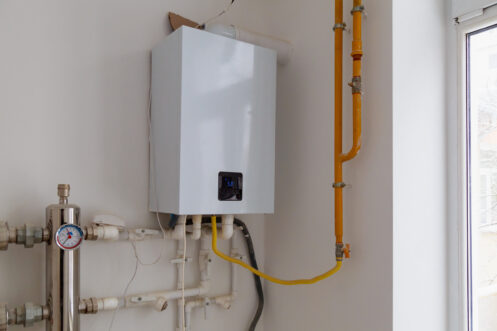Ways to Properly Maintain Your Home's Hot Water System
Ways to Properly Maintain Your Home's Hot Water System
Blog Article
This article further down pertaining to Tips For Maintaining Your Hot Water Heater is indeed intriguing. Don't skip it.

Hot water is vital for everyday comfort, whether it's for a refreshing shower or washing recipes. To guarantee your warm water system runs effectively and lasts longer, regular upkeep is vital. This short article provides functional ideas and insights on how to maintain your home's warm water system to prevent interruptions and costly repairs.
Intro
Preserving your home's hot water system might appear complicated, but with a couple of straightforward steps, you can ensure it runs efficiently for many years ahead. This overview covers everything from recognizing your hot water system to DIY upkeep suggestions and knowing when to call professional assistance.
Significance of Keeping Your Warm Water System
Regular upkeep not only extends the life-span of your hot water system yet likewise ensures it runs effectively. Neglecting upkeep can result in lowered effectiveness, greater energy costs, and even early failure of the system.
Indicators Your Warm Water System Needs Upkeep
Knowing when your warm water system needs focus can avoid significant problems. Keep an eye out for indications such as irregular water temperature, strange noises from the heating system, or rustic water.
Recognizing Your Hot Water System
Prior to diving into upkeep tasks, it's practical to understand the standard components of your warm water system. Typically, this consists of the hot water heater itself, pipes, anode poles, and temperature controls.
Regular Monthly Upkeep Tasks
Routine month-to-month checks can help capture small issues prior to they escalate.
Flushing the Hot Water Heater
Flushing your water heater gets rid of sediment accumulation, boosting efficiency and extending its life.
Monitoring and Replacing Anode Rods
Anode poles stop deterioration inside the tank. Inspecting and changing them when worn out is essential.
Examining and Changing Temperature Level Settings
Changing the temperature level setups makes certain optimum efficiency and safety and security.
Do It Yourself Tips for Upkeep
You can execute numerous upkeep jobs on your own to maintain your warm water system in leading problem.
Looking for Leakages
On a regular basis examine pipelines and connections for leaks, as these can cause water damage and greater costs.
Checking Stress Relief Valves
Examining the stress relief valve ensures it functions appropriately and stops excessive stress accumulation.
Protecting Pipelines
Shielding warm water pipelines minimizes warm loss and can save energy.
When to Call a Specialist
While DIY maintenance is helpful, some concerns require expert experience.
Complex Problems Calling For Expert Aid
Examples include significant leaks, electrical issues, or if your hot water heater is consistently underperforming.
Routine Specialist Maintenance Conveniences
Expert maintenance can consist of comprehensive examinations, tune-ups, and guaranteeing compliance with safety and security criteria.
Final thought
Regular upkeep of your home's warm water system is important for performance, long life, and expense savings. By adhering to these suggestions and knowing when to look for professional aid, you can make sure a dependable supply of hot water without unexpected disturbances.
How to Maintain an Instant Hot Water Heater
Before tinkering with your hot water heater, make sure that it’s not powered on. You also have to turn off the main circuit breaker and shut off the main gas line to prevent accidents. Also turn off the water valves connected to your unit to prevent water from flowing into and out of the appliance. 2. When you’re done, you have to detach the purge valves’ caps. These look like the letter “T†and are situated on either side of the water valves. Doing so will release any pressure that has accumulated inside the valves while at the same time avoid hot water from shooting out and burning your skin. 3. When the purge valves’ caps are removed, you have to connect your hosing lines to the valves. Your unit should have come with three hoses but if it didn’t, you can purchase these things from any hardware or home repair shops. You can also get them from retail stores that sell water heating systems. Read the user’s manual and follow it to complete this task properly. When the hosing lines are connected, open the purge port’s valves. 4. You should never use harsh chemical cleaners or solutions when cleaning your unit. Make use of white vinegar instead. It should be undiluted and you’ll probably use about 2 gallons. 5. Now flush your water heater. This task should probably take about 40 minutes. We can’t give you specific directions for this because the procedure is carried out depending on the type, model and brand of your heater. With that being said, refer to the user’s manual. 6. When you’re done draining the unit, you have to turn off the purge port valves again. Remove the hosing lines that you earlier installed on each of the water valves. Put the valve caps (purge port) back in their respective places and be very careful so as not to damage the rubber discs that are found inside these caps. 7. Now that everything’s back in place, check your user’s manual again to find out how to reactivate your water heating system. 8. Once it is working, turn one of your hot water faucets on just to let air pass through the heater’s water supply pipes. Leave the tap on until water flows smoothly out of it. https://www.orrplumbing.com/blog/2014/september/how-to-maintain-an-instant-hot-water-heater/

As a person who reads about What Kind of Maintenance Do Water Heaters Need?, I imagined sharing that article was worthwhile. Enjoyed our article? Please share it. Help someone else find it. Thank-you for your time invested reading it.
Book Service Now Report this page